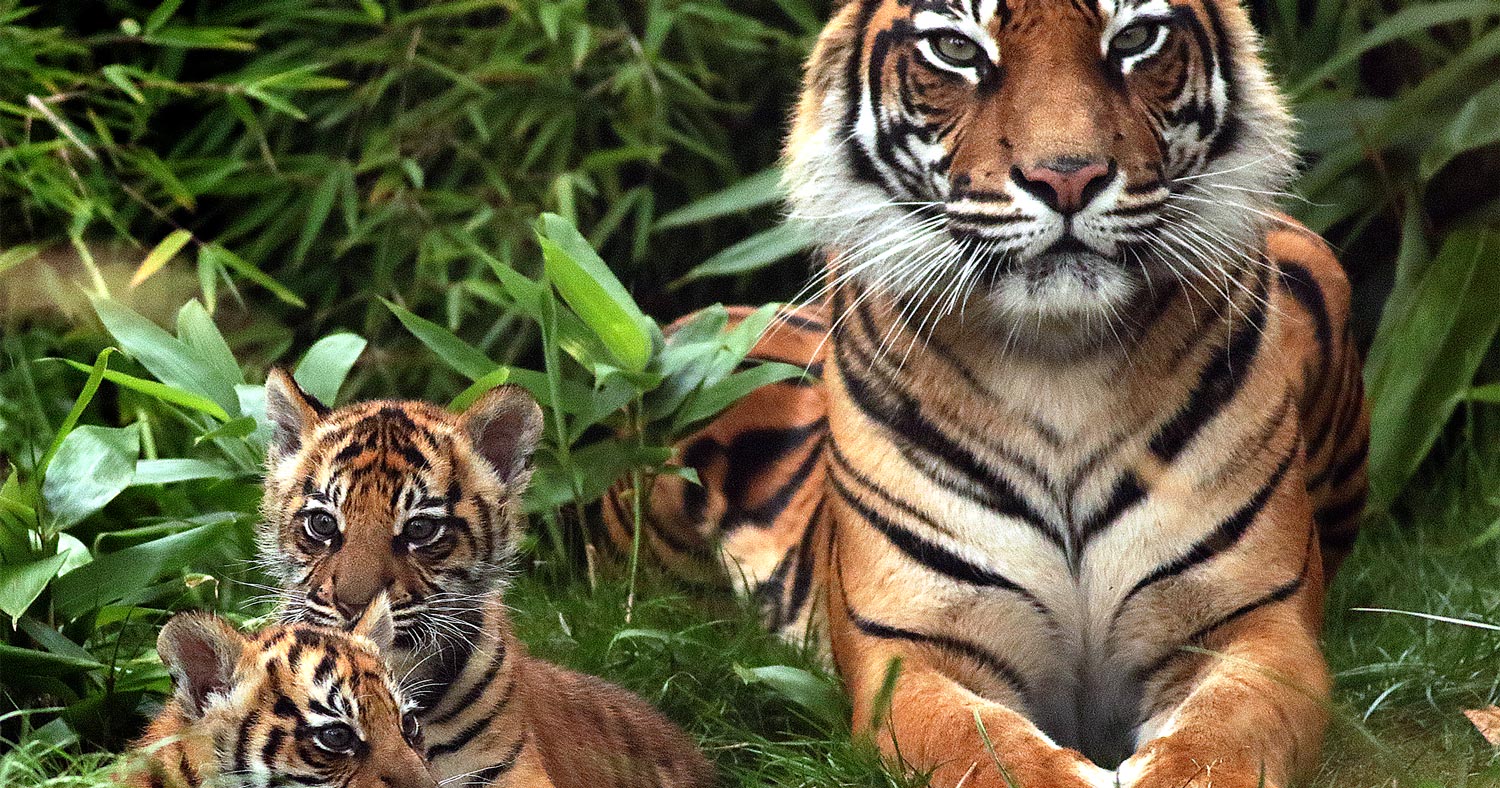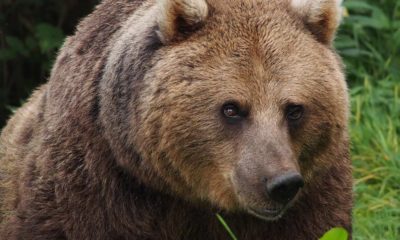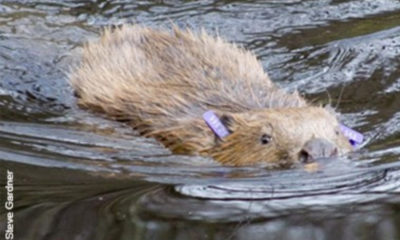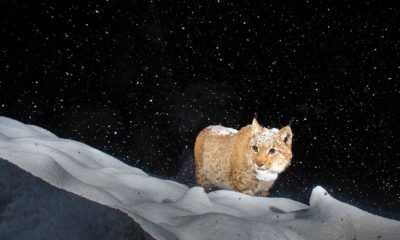Established: 1826 | Size: 36 Acres | Species: 736 (fauna) | Specimens: 2,264
ZSL London Zoo: History and Purpose
The London Zoo opened to fellows in 1828, two years after being founded as a scientific animal research centre, and it wasn’t to be until the 1840’s that the public gained access. Over the years, it has emerged as a leader in the fields of taxonomy and on-the-ground conservation work. It has also been involved in some important captive breeding programs, which we discuss below.
In more recent times, London Zoo has worked to incorporate modern philosophies into their park, like the the imitation of natural habitat in enclosures. This has resulted in overhauls of the big cat and primate spaces amongst others. On top of animal welfare, however, the Zoological Society of London (ZSL) also sees itself playing an important role in the conservation movement of the 21st Century on both scientific research and practical conservation platforms.
Teague Stubbington is the Assistant Curator of Mammals and focuses primarily on this group, “from charismatic megafauna like rhinos and gorillas to the shy and nocturnal slender loris,” he says, and insists that zoos like his have a huge role to play in saving wildlife.
“In my lifetime,” he says, “fifty percent of the world’s wildlife has been lost. Zoos globally are part of the solution and working in collaboration with governments and other conservation organisations we are achieving a lot. But the pace of wildlife loss is not slowing and we are far from living sustainably on this planet.
“Zoos and other conservation organisations need not only the invaluable support from people visiting zoos and getting involved with our initiatives,” he adds. “We also need every individual to become aware of their connection to wildlife.
“With that awareness we can all see that we can choose how we live and understand how our choices can either further damage or preserve our wildlife. The issue is further compounded by our separation from the natural world – for many people a wild animal is only seen on a screen. To truly understand an animal you need to share a moment with it. Our biggest challenge is giving people this moment of connection on a scale big enough to have the impact it needs to inspire them to make a difference.”
So how are they getting this done?
Animal Welfare and Enclosure Design
Stubbington explains that ZSL sees the decline of animals in the natural world as a driving force behind the increasing importance of their work.
“The world’s wildlife population has halved in the last forty years, and the animals in our two zoos are part of the conservation of the world’s remaining wildlife,” he says. “Working with the senior curator, we manage which species are part of ZSL’s living collection, working closely in collaboration with other zoos and conservation organisations around the world.”
Which highlights an important development over the past few decades in the zoo field – an international relationship overseen by WAZA, which helps to bring the resources of organisations across the world together to increase the efficacy of the work being done.
Stubbington also discussed the sort of things ZSL does to improve animal welfare in captivity – an increasingly sensitive, and deservedly important, subject.
“Ensuring that the animals in our zoos live enriched and full lives is fundamental to our work and this starts long before any new animal arrives at the zoo. As one example, we integrate enrichment into the design of our enclosures. We look at an animal’s biology, physiology and behaviour, and use this to guide their exhibit design.”
“We aim to create an environment in which animals live well, express choice and a natural behavioural repertoire.”
He gives the charismatic Sumatran tigers as an example.
“Tigers have incredible eyesight and can see well over long distances, and like most animals they prefer shelter from wind and rain. So in Tiger Territory we designed resting areas with long views, at different heights and orientations. This gives our tigers choice, the ability to use their visual senses and the ability to rest feeling secure and safe. We even took into account the prevailing wind direction and sun angles,” says Stubbington.
Caring for Captive Animals
But there is not just work to be done before the animals arrive – ongoing care, maintenance and research must be done to ensure ZSL London Zoo lives up to its role as a leader in animal welfare and conservation work. So how do they achieve this?
Stubbington says it’s a combination of intensive training and “motivated zookeepers [who] ensure our animals thrive.”
“Detailed and extensive record-keeping using global web-based software allows us to evaluate our observations, ensuring that we continue to provide the best care,” he explains. “Our keepers are also supported by a wider team of professionals: Our veterinary team provides clinical care to the animals on site as well as technical advice and training to conservation partners globally, teaching masters and research students and sharing their own experience in peer-reviewed publications.”
ZSL also operates the Whipsnade Zoo based outside London, and in both locations there is a specific group of professionals employed to focus solely on animal nutrition. Diets provided to each species must meet nutritional needs, and that means detailed records, ongoing observations and constant evaluation, according to Stubbington.
On top of this, a separate body – known as the behavioural management committee – works to ensure that enrichment beyond initial enclosure designs enables the species to replicate, as near as possible, behaviours seen in the wild.
Stubbington insists that complimentary practices across multiple groups ensures ZSL continues to improve on industry standards.
“When it comes to research, sharing our knowledge and experience is vital to protecting and conserving wildlife across the globe. Through ZSL’s Institute of Zoology we undertake fundamental and applied research in five thematic areas. Within both zoos we coordinate research for undergraduate students, helping them to become the conservationists and scientists of the future. Postgraduate research in our zoos helps provide objective and substantiated studies, filling in our knowledge gaps to further improve husbandry practices.”
Captive [or Conservation] Breeding
There is one particular area that seems to inspire either hope or ire depending on which side of the zoo fence you sit – captive breeding.
For those in support of these organisations, it is the lifeboat saving animals from extinction, with the added positive of the potential for release to the wild. For those opposed, however, it is the excuse used by the industry to enable the continued captivity of species that are now exempt from capture in the real world.
Stubbington insists the former is more on point.
“For many of the species in our zoos,” he says, “conservation breeding is critical for their future survival, and keeping thriving, healthy animals is how we do this.”
We put to Stubbington the question of a flagship breeding program that represents the good that can be achieved.
“This is a hard question,” he begins, “As there are so many wonderful species that we work for. We have several species in the zoo that are extinct in the wild and most are under threat of extinction. Conservation breeding is one important part of the coordinated conservation effort needed to conserve our world’s wildlife.
“There are well-known examples, like the golden lion tamarin, which through captive breeding was saved from extinction and is a species that we still work hard to conserve. We now fulfil a mandate from the Brazilian Government to manage a self-sustaining, genetically healthy global captive population, both as insurance against the risk of future extinction and as a source for future reintroduction [or reinforcement].”
It is worth noting that the key to averting the GLT’s extinction was perhaps more to do with protecting habitat, increasing connectivity, and assisting in the translocations of wild monkeys. The importance of the insurance populations highlighted by Stubbington, however, should not be discounted.
He also includes the mating of the Sumatran tigers, with cubs Achilles and Karis photographed above, as an indicative success.
“[This] not only contributes to a sustainable, healthy insurance population managed between zoos globally, but through the support of each visitor who comes to see them, ZSL and our conservation partners can continue vital work in the field that means there are more Sumatran tigers alive in the wild today than there would have been without our efforts.”
It is worth baring in mind that no Sumatran tigers have been successfully reintroduced in the wild.
A lot of work must be done to enable the right environment for an animal to breed in the first place though, and much of this comes down to proper husbandry practices that limit stress on individuals.
“A behavioural management officer brings expertise in animal behaviour and training that allows our keepers to continually improve animal care,” explains Stubbington. “Many necessary clinical procedures are now done simply and without the need for anaesthetic – from teeth inspection by a specialist wild animal dentist to annual vaccinations – because of careful training to encourage the animals to, for example, offer up their tails or paws for blood tests or injections.”
A great example of ZSL’s work is the saving of the remaining species of snails in the partula genus, with almost 50 species already extinct. The zoo coordinates the captive breeding program across a number of countries and highlights the importance of not just focusing on charismatic megafauna.
And one final example is the Asiatic lion program, recently commenced by ZSL. A recent import of individuals from India to Whipsnade (one male and two females, believed to be destined for the London zoo) will add some much-needed genetic diversity to the European breeding program – but this is not all the society is doing for the species.
In The Field
ZSL is involved in what is known as in situ work – meaning programs completed on the ground. A high-profile example of this is the Gir Forest Asiatic Lions project, which also saw a new space in London Zoo built for this handsome species. It was opened to acclaim in 2016.
“ZSL London Zoo is actively participating and leading in new and existing programs for the Asiatic lion, and it is a good example of the way we work across multiple disciplines,” says Stubbington. “In the Gir Forest we work with local partners training and equipping rapid response teams to rescue and rehabilitate injured or trapped lions.”
He also notes that ZSL vets have been training their Indian colleagues in the clinical treatment of the animals.
“For example,” he says, “[we are] training vets to intubate anaesthetised lions to help them breathe – a technique ZSL staff learned from working with tigers, and which could mean the difference between life and death for a sick lion.
“We’ve [also] worked with Gir Forest rangers to implement a new patrol-based monitoring system to give staff clearer and more scientific data on what is happening in the protected area, helping to identify threats and monitor activity. SMART [Spatial Monitoring and Reporting Tool] was developed by conservation organisations including ZSL and is a combination of software, training materials and patrolling standards to establish effective patrolling systems, monitor wildlife populations and movements and identify threats such as poaching or disease,” says Stubbington.
Asiatic lions are so close to extinction – numbers sit at around 500 in the wild – that having insurance populations in captivity is crucial to their long-term hopes. Stubbington says that Sakkarbaug Zoo in Gujarat, India is an important part of that program, and ZSL has partnered with keepers and vets on site to share best practices in both husbandry and breeding.
“ZSL keepers have shared enrichment techniques in the enclosures to encourage the lions’ natural behaviour,” he explains, “including scent-marking and enrichment devices to encourage feeding, hunting and foraging behaviour.”
Education for Conservation
Stubbington says that ZSL London Zoo continues to find ways to improve the success and longevity of their conservation work, particularly through education.
People can make a difference for wildlife through our connection with and understanding of the natural world, which can drive how we can move towards a sustainable future for every species on the planet.
“I think our education programmes have been particularly effective as they have been a large part of the reason so many people at ZSL now work for wildlife. I have worked to care for and conserve wild animals for the last twenty years, and I know that at the heart of every conservation success story there is a dedicated individual, many of whom have given their life to their work.
“So many of my colleagues at ZSL and other global conservation organisations first connected to wildlife by the opportunity they had to visit the animals in our zoos. Without these people, modern conservation as we know it would not exist.”
























You must be logged in to post a comment Login